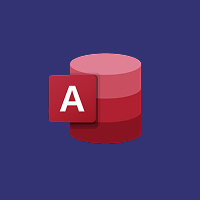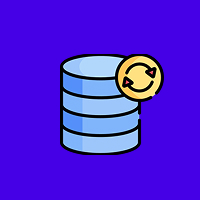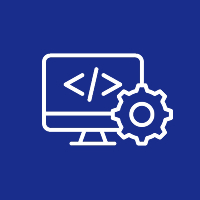Unit testing forms the foundation of modern software development. Unit testing ensures that individual parts of code work together as expected, helps you fix bugs early, maintain quality, and safely refactor code. In the Node.js ecosystem, Mocha (a flexible and powerful example test framework) and Chai (an extensible and readable assertion library) are two powerful tools.
This guide will help you understand how to use Mocha and Chai to write good unit tests for your applications. This guide provides an overview of how to set up your local testing environment and get started by writing your first test while following industry best practices for clean and maintainable testing.
Why Mocha and Chai?
Mocha acts as a test runner, controlling how and when tests execute. You can organize tests into suites, run them synchronously or asynchronously, and manage reporting for clear results. Its flexibility and wide adoption have led many developers to create plugins that support a variety of testing scenarios.
Chai, on the other hand, acts as the assertion layer. Chai provides the developer with the ability write expressive, human-readable tests leveraging styles like should, expect, or assert. Tests that are easy to read (and easy to understand not just by you, but by anyone who may look at your code later) ultimately provide better documentation than something that needs additional explanation.
Configuring Your Test Environment
To begin using Mocha and Chai, you need a project configured with a Node.js runtime and npm as your package manager. After you initialize your project, you’ll install both Mocha and Chai as dev dependencies. It’s also good to set up a new folder to hold your test files (usually named test), so they stay separate from your production code.
You would also want to configure your test script in your package to allow you to run your tests with one command easily. Once your environment is set, you can start writing and running tests.
Writing Tests & Structuring Them
Unit tests test individual functions or units of work. You can start with simple working functions – something simple like a math utility or string formatter – and create test files to go along with them in your test folder. Unit tests can be organized into logical suites with “describe” blocks, while an individual test is defined via the “it” block.
Using “describe” and “it” allows you to organize your tests by the feature, component, or module type you are testing. Mocha will run each test and indicate whether the actual result agreed with the expected behaviour.
When you have written some tests, and your codebase has grown to a readable size, you’ll be happy you had some consideration into how to structure the tests. You can also organize your tests into subfolders according to different features, allowing your test suite to scale nicely with the project.
Mocha Features that Help Testing
Mocha has many features built into it that make testing easier and more powerful:
- Hooks allow users to run setup or cleanup code before or after tests, or before and after each individual test. They are especially useful for resetting state or initializing data.
- Async test support means that you can test asynchronous code, like API requests or database queries, using callbacks, Promises, and the async/await syntax.
- Custom reporters allow you to create readable output or export to CI/CD.
These features help ensure that Mocha can deal with anything from simple utility tests, to completely featureful service tests and integration testing.
Chai’s Assertion Styles
Chai has three main assertion styles to choose from:
- The assert style is, more-or-less, the traditional style of assertion that is more in-line with standard test frameworks.
- The should style is chainable and reads almost like natural language.
- The expect style is popular because it is flexible while also reading well.
All styles have the same purpose—to verify expected outcomes—but offer different syntax based on your or your team’s preference. Most developers prefer expect because it reads well, and while maintaining flexibility. It is also often the style that tends to lead to better compatibility across testing plugins.
Best Practices for Writing Good Unit Tests
Good unit testing isn’t just about syntax or structure, it is about discipline and careful thought when designing tests. Here are a few best practices to remember:
- Tests should be focused. Each test should assert one specific behavior. Don’t combine multiple assertions in a single test case.
- Test names should be descriptive. Any person should be able to get a sense of what a test is doing just by reading the name of the test.
- Units should be isolated. Do not allow tests to depend on shared state, or other functions. You should inject mocks or stubs to simulate your dependencies.
- Use code coverage tools. Tools like nyc or Istanbul will help you measure how much of your code is being tested, and expose untested paths.
- Run your tests often. Make tests a part of your development cycle, and automate with a CI/CD pipeline.
- Refactor tests as you refactor code. If you have made changes to your code, you may have to change your tests too. You will want to keep them synced so you do not cause false positive or false negative results.
Going Beyond the Basics
Once you have a good understanding of unit testing in Node.js, you might want to think about more sophisticated techniques:
- To isolate the unit under test and simulate dependencies, we recommend using mocking libraries (such as Sinon.js).
- Make sure you also test edge cases, which may include unexpected inputs or failure cases that your functions will need to gracefully handle.
- Getting the tests running in an integrated CI/CD pipeline so that they run automatically on every commit can catch regressions earlier.
- Coupling linter, type checks and unit tests elevates quality through assurance and reinforces a mindset of going further upfront to avoid unreliable and unexpected runs-time errors.
You may also want to explore hybrid testing disposition, utilizing Mocha and Chai for unit tests coupled with Supertest for your integration or API tests.
Conclusions
Mocha and Chai can provide a flexible, readable and scalable framework for testing Node.js applications. Now that you are familiar with unit testing with Mocha and Chai, and the minimum configuration is complete, you should have a better understanding of how simple it is to begin writing unit tests using a semi declarative syntax that you will be able to trust in elevating code quality and control bugs.
Don’t think of testing as something you have to do, think of testing as an iterative investment that will pay you back returns through additional stability, faster debugging and overall confidence in your code when deploying something new. By continuously improving your test suite and using good practices, we can ensure that our Node.js applications will continue to be robust over time without us lamenting code dependence.
Contact Us Today













 Database Development
Database Development












































